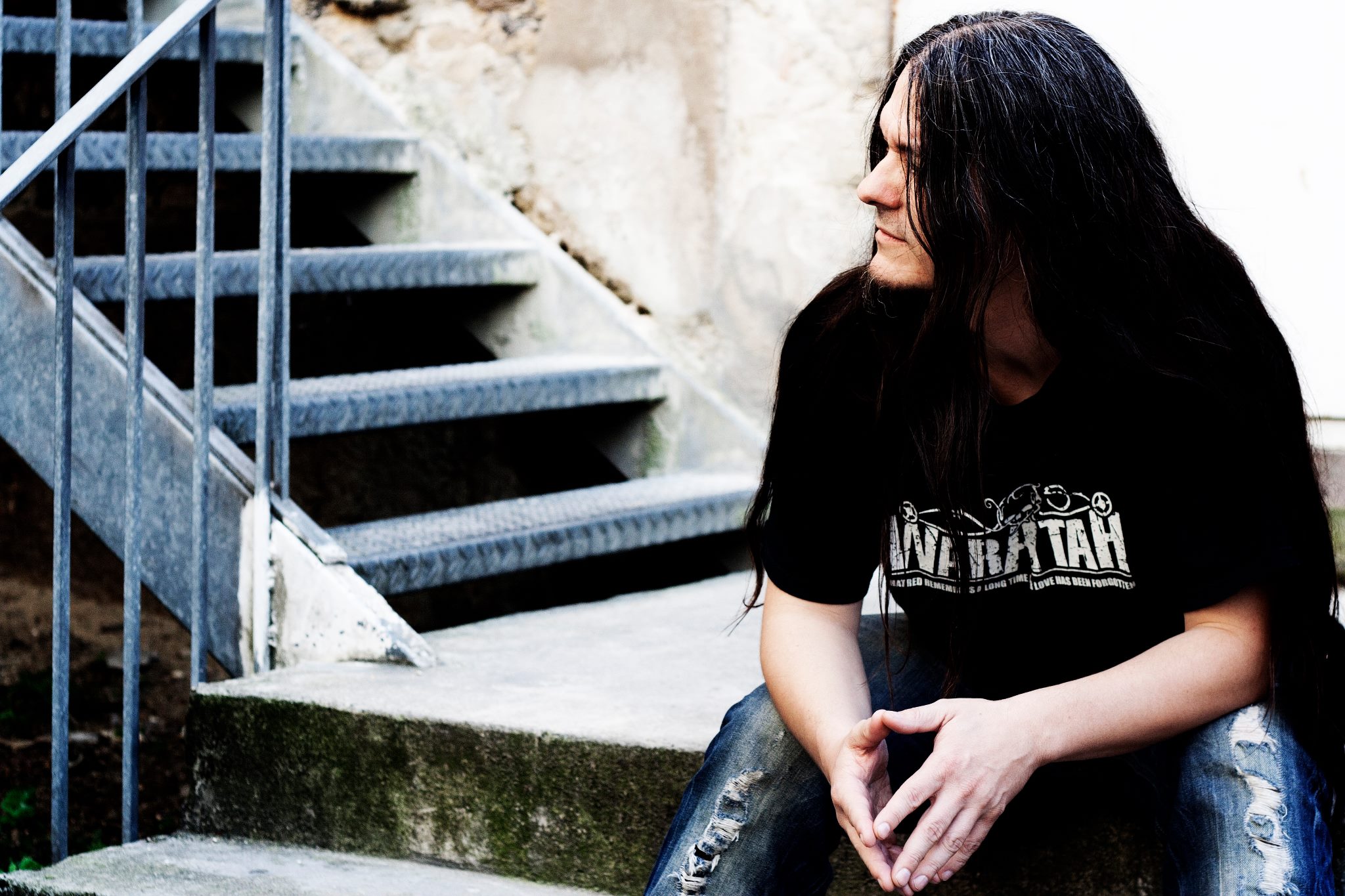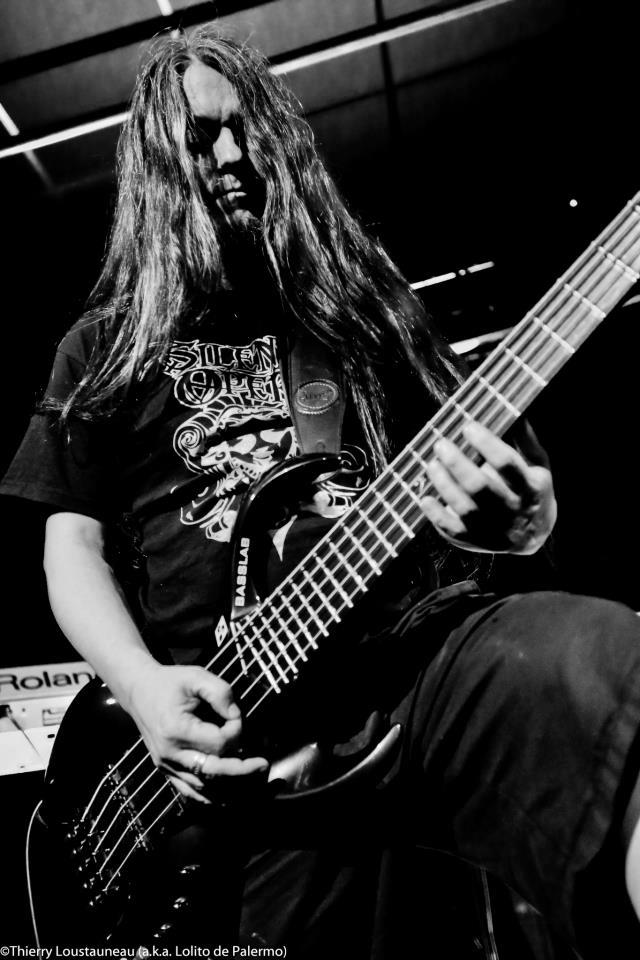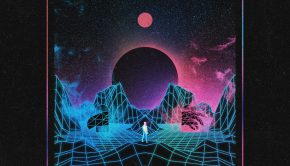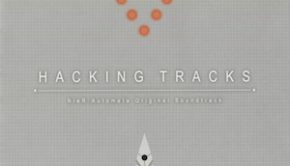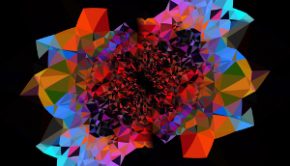Frédéric Motte Interview: Metal, Horror, and… Furries?
French composer Frédéric Motte (aka Elmobo) is one of the veterans of the Amiga demoscene. Over the years, he has produced many impressive scores, ranging from the funky Fury of the Furries, to the ghoulish Nightmare Creatures, and the rocking Bakugan. Also active as a recording artist, he has also produced two studio albums with his band Plug-In, between recording, mixing, and mastering songs for many of the biggest metal bands.
In this interview, Motte offers a delightfully honest and insightful perspective on his life and works. In the process, he offers both an introduction to his work to newcomers, as well as many untold anecdotes and other amusing insights to his long-time fans. In particular, he reflects three of his biggest passions — heavy metal, horror, and shmups — and how he somehow got pigeonholed as a casual game composer. He also gives rich insight into his projects, including an elaborated Nightmare Creatures album and two new game titles.
Interview Credits
Interview Subject: Frédéric Motte
Interviewer: Chris Greening
Editor: Chris Greening
Coordination: Chris Greening
Interview Content
Chris: Frédéric Motte, Elmobo, many thanks for talking to us today. First of all, could you tell us about the experiences that got you interested in music, games, and technology?
Frédéric Motte: We have to go way back in time, in 1982 to be exact. I was just a kid, and one evening, my parents were having a some friends for dinner. One of them brought his new incredible toy, a Sinclair ZX81, hooked it to our (black and white) TV set, and showed us what it could do. It was all text, with no graphics or sound, but I was sold. I wanted one. So, for a year, I asked to my dad the same question over and over. “Can we have one? Can we have one?”. I knew he would eventually say yes, because I noticed he was quite interested in the machine as well. So in 1983, the family bought a home computer. But we chose the Oric-1, because it was in color and could do sound.
The Oric became my best friend, and I quickly started to program music on it, in BASIC language, typing long lines of data. That, and the few games that came out on the machine, like Xenon-1, The Ultra, or Defense Force… Oh boy, it didn’t take long to turn a regular 13 year old boy into a full time geek.
A few years later, the C64 replaced the Oric, and when I heard the music from Commando and Monty on the Run, my love for computer music grew to a point I would make tapes of game music. In 1986, things got a little more serious when I got my first Amiga. I did a bit of music for Aegis Sonix first, but when I tried Soundtracker, I felt this piece of software was made for me! It was so user friendly that I couldn’t stop making music with it.
Chris: Over the years using the Amiga, you have created legendary tracks for demos and musicdisks for groups such as Impact Inc., Dragons, Alcatraz, and Sanity. Looking back at this period, what creations were most memorable to you and why?
Frédéric Motte: There was that tune “Progressive-Funk” which I made for Impact Inc.’s Vectorballs in 1990. I think it’s about 10 minutes long. I’ve always loved long tunes, which take their time to develop and to progress. I was very satisfied with this one. But the music from Substance by Quartex, was my breakthrough in the scene. And I’m glad it was with this tune. I put an insane amount of work in this one, and I was happy to bring the demoscene a rock sound it was lacking, in my humble opinion.
And of course, I have to speak about the demo Arte by Sanity, for which I made three tunes in 1993, which were my farewell to the demoscene. I still receive a lot of love from fans around the world for these tunes. It feels weird, more than twenty years later, but good weird, you know.
Chris: You spent your early years working for Coktel Vision on titles such as No Exit, Gobliiins, Fascination, and A.G.E. How would you describe scoring games back then compared to now? Which projects did you most enjoy participating in?
Frédéric Motte: I remember making these scores you’re talking about with a happy-go-lucky state of mind. I just made the tunes, with no pressure, just being happy to be making music for some games. Now, I must say I put a lot more thought in what I’m doing. There’s more pressure of course, as I’m making a living on game music, which is something I wasn’t even considering when I got my first gigs in the game industry. So I need to be on top of my game, for every game, and it’s something which isn’t always easy when you work on games that don’t appeal to you.
When I started composing for games, game music was definitely a music genre. You would listen to a game score, and you’d know instantly it was coming from a game. But now that we have access to studio quality production to produce our music, and with game graphics becoming more realistic every day, game music as a genre doesn’t really exist anymore, at least in the big budget games. Now, we have to make music that support the action and the universe of the game, something which wasn’t exactly mandatory 25 years ago. For example, as much as I love the music of Castlevania: Dracula X on the SNES, by today’s standards, it’s totally out of context for a vampire game, unless you want to do a genuinely old school game.
One other thing that has changed, in my opinion, is the fact that in those days, we had to be very versatile, to be able to compose in many different styles of music. This is still true today, of course, but we also find developers contracting composers not because they can do everything, but because they have a strong style which they think will fit their game. Being one of the old school composers, I’m mostly labelled as a do-it-all guy, but I’ve done very few game scores in which I could let people get a glimpse of my own musical world. Happened a bit on Ultimate Race Pro and Nightmare Creatures, but that’s about it I guess. But I’m digressing… So yeah, from 1990 until now, the industry has changed quite a bit, and so have I!
Chris: Looking back on all your projects, do you have any personal favourites?
Frédéric Motte: As an avid gamer, it’s such a pleasure to work on a game I want to play. Scoring Fury of the Furries was sweet because the game is good and fun. Working on Nightmare Creatures was awesome too. I’m a horror movie buff so the game really struck a chord with me. On top of that, it allowed me to express a bit of the darker side of my music, something I haven’t had the chance to do very often in my career…
Chris: Focusing on the first of these for a moment, you released the soundtrack for the Amiga’s Fury of the Furries twenty years after composing it. Could you share from both a musical and technical perspective how you got this soundtrack sounding so good? What influenced the funk stylings of this release?
Frédéric Motte: Well, Fury of the Furries was a bit of a challenge, because each tune in the game needed to be under 50Kb. But thanks to my “work” in the demoscene, I already had an extensive instrument bank on my 20MB hard disk (yes, TWENTY MEGA BYTES), and I was used to work with those tiny samples and to optimise the size of the music files. So making them sound “good” wasn’t much of a problem. It was a time I really enjoyed the challenge of making the music file as small as possible while keeping an acceptable sound quality.
It was a very fun game to score, with all the different worlds needing different kinds of music. It was one of those game with each level taking place in a different setting. Mountain, forest, desert, etc, etc… Some music choices were quite obvious: portraying the pyramids with some ethnic melodies and samples, or capturing the lagoon with some happy lagoony music for example. But for some more generic level, like the metro or the mountain, I went for more funky tunes, because it would fit just about anything. And I had just started playing bass the year before, so it probably helped me to get in a funky mood…
That said, my music choices were totally useless, because the developers assigned the music totally randomly to the levels! So I often get emails from fans saying that I misnamed some songs on my Bandcamp release. But I didn’t, they’re named after the levels they were supposed to be assigned to.
Chris: Moving on to the second highlight score you mentioned, the Nightmare Creatures soundtrack received much praise for the way it blended gothic and horror elements with contemporary rock music. How did you develop this sound and what were your inspirations?
Frédéric Motte: When the team came to me to speak about the game, I was really excited! As I said, I’m a horror movie fan, I’ve been in love with the movies from Hammer Films since I first saw The Hound of the Baskervilles when I was a kid. So a game set in London, during the 19th century, with zombies, werewolves and others ghouls, was really appealing! A big part of the team, including Pascal Barret, the Art Director on the game, were heavy metal fans like me, so it didn’t take long before we agreed on having some heavy metal on the bosses.
The biggest challenge was that it was going to be my first game with an audio CD soundtrack. That meant recording real bass and guitars. We had to buy some equipment like a mixing desk and a direct-to-disk system (not very common and very pricey in 1996 !). So many new things to learn, including playing guitar! It was the first time I had to mix live instruments with synths (all drums and pads came from the Roland JV1080 and the Korg M3r, for synth lovers around). So, yeah, quite a challenge, but a really exciting one! The level music was more straightforward; only synth and some sound effects were used, so it was a lot easier to process.
My inspirations for the metal tracks, while they might not be obvious when you listen to them, came from old school heavy metal bands like Black Sabbath or Venom, and from bands I was really into at the time, like Machinehead or Sepultura. The level tracks are more influenced by the music of John Carpenter’s movies, like The Thing, and other 70’s and 80’s horror movies soundtracks. I wanted to have more minimalistic music on the levels, to convey a darker and heavier ambiance. It was my first take on such a soundtrack, and I enjoyed making it. Immensely!
Chris: What inspired your decision to take a more ambient direction for the sequel?
Frédéric Motte: The first reason was because of technical constraints. The way the game engine was build for Nightmare Creatures 2 didn’t allow us to use CD tracks for the music. So we had to use XM files. I had roughly 500-600 KiloBytes for the music in each level. No metal this time, as I would have had to use small guitar samples, and it would have sounded very cheap, and chip. The beauty of sample-based music is that you can play samples at very low frequencies, and thus turn a 0.5 fart sample into a low ominous pad!
What’s more, as the game was darker and bleaker than the first one, I was convinced this approach would help making the player a bit more uneasy. Silent Hill was released when I was working on Nightmare Creatures 2, and when I played it, Akira Yamoaka’s work confirmed that an ambient and minimalistic soundtrack was the way to go, even if the game was a bit more action driven than Silent Hill.
Chris: As sound lead at Kalisto, you were involved in a full range of activities – music, sound design, voice casting, and sound editing – on projects such as Nightmare Creatures, Dark Earth, The Fifth Element, and Savage Warriors. Did you gain many new experiences in this role? How did you go about processes such as voice casting and sound design?
Frédéric Motte: Yes, I had to do many tasks besides music. It goes with the position, but I’d rather do music than anything else… I did voice casting for Dark Earth together with Guillaume Le Pennec, who was the manager of the project. We needed a lot of dialogues to be recorded for this one, and it was quite fun to try and find the right voice for each and every character of the game. Luckily though, I didn’t have to do it for all the localizations. As I said, I wouldn’t want to do that instead of music.
Sound design is another story, though. Back then, my samplebank was mostly made of sounds I would steal from movies, and then edit and transform them until fit for purpose. And I was doing a bit of foley, but as I had some awful recording equipment, it was actually a chance the sound files had to be downsampled to 22 or 11khz! For example, most of the monsters sounds in Nightmare Creatures were made with my voice going through various effects, like realtime pitch shifter or guitar distortion.
But year after year, I got more and more gear, and now, I’m having a lot more fun with creative sound design. By creative, I mean not doing door opening and closing sounds, but doing sounds from scratch, i.e. sounds that don’t exist in real life. It can be real hard sometimes, but it’s very rewarding when it works!
Chris: You also mentioned Ultimate Race Pro. To create the incredible main theme for this game, you assembled the band Plug-In. Could you share the story of how the band formed? How do you build on this sound with you first full record together, #0.9?
Frédéric Motte: I composed the body of the song, played the bass and rhythm guitars, and then I was stuck. I needed to put some lead guitars on the tune, but as I said, I ain’t no guitarist! There was a programmer at Kalisto who happened to play the guitar. He offered to record the leads, but it wasn’t good enough, so we agreed not to use it. So I kept on scratching my head… I knew a couple of guitarists, but I needed an EXCELLENT guitarist.
And then miraculously, my boss dropped a letter on my desk. The letter was basically saying “hey, I’m a guitarist, I love guitar and video games, and I would love to merge both.”. I took my phone and called the guy. Turned out he was playing a gig with his band the day after. I went to the show, and he was incredible! So I asked him to drop by my office with his guitar. A few days later, he came, and we recorded the lead track in one afternoon. It was totally improvised, but also totally incredible!
At the end of the day, we listened to the result, and we both thought the same thing: ”we should start a band!” So we did. Fanalo and I started working on our first EP, which we recorded at Kalisto, in the evenings after work. The drums are sequenced because I had no means to record a real drumkit in 1999 (I do now!). We were both big fans of Joe Satriani and Steve Vai back then, and I guess it shows in our first release. But we really enjoyed making it, and quickly recruted a drummer to play our songs live.
Chris: More recently, Plug-In released their second studio album Hijack. What was it like to compose and record this record after so long away? Would you agree that this release represents the culmination of your instrumental rock sound to date?
Frédéric Motte: Actually, Hijack was composed a long time ago. I think it was composed between 2001 and 2003. But its recording was a bit diffficult. First, Fanalo and I had really busy schedules, and it was incredibly hard to organize work sessions together. Then there’s the infamous, dreaded hard disk crash, which made us lose the guitar parts once. When we started the recording, we had no drummer, so I spent a lot of time programming the drums. And then our first drummer, Pierre Belleville, offered to record the drum parts.
Once that had been done, I just needed to mix the beast, but it took me a looong time, because of my work at the studio. And then, we needed some artwork. I lost two years, working with three different artists who started working on the cover, but couldn’t finish the job. Then, Sam Shearon (aka Mister Sam, who worked with artists like Rob Zombie, Iron Maiden or Fear Factory) offered his services, and from there, everything finally went smoothly until the release of the album in September 2011.
We’re very proud of the result, but in all honesty, we’ve been so slow to release this that it sounds very dated to me. This is what I liked to do ten years ago, but now, I like my music a lot darker. So that’s why Plug-In is now in a sort of hiatus. I loved doing what we did, but I need to express myself in a more personal project now. Maybe Plug-In will be back one day, I don’t know, but for now, don’t expect much from us as a band.
Chris: In the last decade, you have also recorded, mixed, and mastered dozens of other heavy metal albums through your studio Conkrete Studio. Could you tell us more about this studio? What artists and records did you most enjoy working with?
Frédéric Motte: Well, using my studio to work with other bands isn’t something I had planned at all. It just happened. I met a friend at a concert. He told me about his new band, that they had recorded some songs, but they weren’t able to get the sound they wanted out of the recordings. Without thinking, I said “give me the tracks, I’ll try to mix a tune, just for fun”. And that was it. I mixed a song, the band was amazed by the result, and I found it so exciting that I decided to keep on doing this. So I founded Conkrete Studio.
I can’t do recordings in my own studio, as it’s too small, so I travel from studio to studio, to record bands. Then, I come back to my own mixing/mastering room to finish the job. I also work with bands who just need mixing and/or mastering, of course.
Over the years, I’ve worked with incredible bands. I can’t name them all (sorry guys !!), but I need to talk about Eryn Non Dae which is probably one of my fave bands ever. I love working with these guys, they’re crazy, and their music is darker than dark matter. Also loved working with Gorod, probably the best tech-death metal band in France. Incredible musicians, so easy to work with!
Chris: What other artists and composers do you most admire?
Frédéric Motte: There’s that one band from Sweden called Meshuggah. You can’t fathom how much I LOVE this band. Saw them live last year, and it was a life-changing event. I’ve seen them live quite a few times over the years, but this one show was incredible. Earth shattering sound, massive riffs, incredible musicianship, and such charisma on stage. Best band ever if you ask me. There are many more bands and artists I love, like Karnivool, Alice in Chains, Kansas, Devin Townsend, Mastodon, Opeth, Scarve, Sevendust… Can’t list them all…
And there are of course quite a few game composers I truly admire. People like Tim Follin, Martin Galway, Rob Hubbard, or Ben Daglish, for example, have made so much unforgettable music on old school patforms. I also love guys like Yasunori Mitsuda, Matt Uelmen, Jake Kaufman, Romain Gauthier, Hitoshi Sakimoto, and many more…
Chris: Looking more generally, your works have spanned rock, electronic, and many other approaches. Was this your decision, or do you have any preferences for what style you compose in?
Frédéric Motte: Yeah, I love it when I can do rock/metal for games. Or when I can do very dark music, even if it’s electronic. That said, 90% of the time, I’m asked to do all sorts of happy music. But that’s OK, as I like it too. I probably wouldn’t do that kind of music spontaneously, but I still enjoy composing nice melodies.
One thing I’d love to do is to score a good shmup with a typical shmup soundtrack. I’m actually working on a shmup right now, but the guys want something darker and more violent (so that’s OK !). And I have another shmup project on the go with a good friend, so I might finally make a classic shmup soundtrack in the near future! Can’t believe I’ve never done one in 25 years!! I love shmups so much!
Chris: As you said, most of the time, you’re asked to do happy music. You’ve worked on lots of child-targeted titles such as the Tim Power, Dolphin Island, Totally Spies, and Imagine Teacher series. What was it like to work on such projects alongside your adult-targeted work? Are you constrained by the type of music you can compose?
Frédéric Motte: Well, actually, this kind of projects represents 90% of my work. I didn’t expect that when I went freelance. I wanted to do more dark games like Nightmare Creatures, but the first contract I got after leaving Kalisto was for the game Fievel: An American Tail on the Gameboy Advance. It wasn’t exactly a dark game, but nonetheless, I really enjoyed composing those nice and happy melodies, using Shin’en ‘s custom music program. After that I got more and more Gameboy titles, and later on, more NDS games. And I was kinda stuck in this market, but I guess it’s because I wasn’t too bad at making these lighter soundtracks.
Of course, I’m not exactly the target audience of games like Imagine Teacher, but each time I tried to find something fun to do with the music. For example, on Imagine Teacher Class Trip (Nintendo DS), I wrote a simple melody and asked my girlfriend to sing it many times, then I pitched her voice and mixed it all together to make it seem it was a group of children singing on the title tune. It was fun to do, and we laughed our asses off during the recording sessions. Totally Spies was OK, because I kinda like the series (OK, guilty pleasure…). Tim Power wasn’t really an exciting game for a grownup like me, but I enjoyed making a really funky soundtrack for this one. So, yeah, if the game doesn’t appeal to me as a gamer, trying to find something fun to do with the music is the key.
Chris: Many of your latest soundtracks, for example Aliens Incursion, AlphaBounce, and Geek Resort, recapture that elating electronic sound of the Amiga. What was it like to relive the demoscene on such projects? Did you produce them with authentic trackers?
Frédéric Motte: AlphaBounce was done with OpenMPT. The music is in XM format, using small sampled instruments, like in the good old days of the Amiga. The format allowed the developper to randomly switch some tracks on and off to make the music sound different from level to level. The soundtrack of Aliens Incursion was made with Renoise. Renoise IS a tracker, but it can host a bunch of VST instruments, so this soundtrack doesn’t sound too tracky. And for Geek Resort, everything was done in Reaper, so no tracker for this one. But in these last two games, I used a couple of chiptune sounds to give the music a slight old school touch. I did it too for Uppercup Football, which has just been released on iOS and Android.
Chris: Looking at your other recent works, Bakugan: Rise of the Resistance is an excellent example of your riff-driven rock sound. Could you share your experiences and approaches of writing music for this game? How did you implement the soundtrack for the notoriously-restrictive DS platform?
Frédéric Motte: The soundtrack of the TV series features many guitar driven tracks, so I had to make this one rock. Once again, I used OpenMPT to make XM files. I tried to apply some of my studio tricks directly on the samples to make the drums more powerful. Also, I made two versions of each guitar sample to make it seem there was two guitars playing, like on any good metal album. I tried a couple of things for the lead instruments, but it wasn’t satisfying, until I tried a classic C64 lead sound. I think it fits perfectly with the heavy guitar sounds. Once again, the chiptune sound saved the day! I also had to add some more electronic sounds to the mix, to make the soundtrack a bit more varied. But honestly, I’m very proud of this soundtrack. Sometimes, I’m thinking about making an arrange version, with real instruments.
Chris: You mentioned you incorporated chiptune sounds into Geek Resort and Bakugan. Would you describe yourself as part of the chiptune revival?
Frédéric Motte: I kinda like incorporating chiptunes. I’m not the biggest chiptune fan, but I like to mix a bit of chip sounds with more realistic instruments. You know, when I started making music on the Amiga, my first aim was to make the music coming from it sound more like a real band. Back in the days, we Amiga guys were all laughing at the Atari ST sound, which honestly sounds like crap. Many of us Amiga composers wanted to make music that didn’t sound like bleeps and bloops coming out of a machine from the past. That’s why this chiptune thing doesn’t really work with me. 25 years ago, when people were asking what my job was, it was like:
– “I’m a composer…”
– “Woow cool !”
– “…for video games.”
– “Oh… So, you’re responsible for those atrocious bleeps and blops I keep hearing all day when my little brother is playing his gameboy.”
Now it’s more like:
– “I’m a composer…”
– “So what ?”
– “…for video games.”
– “Wow cool! What games have you worked on? Man video games have the best music!”
I’m not saying chiptune music is not good music. There are many talented composers making absolutely amazing chiptunes. But I prefer using chip sounds as an instrument rather than making 100% chiptune music. That said, I still love to listen to some good old C64 tunes from time to time. I love the C64 sound, it’s so vivid and organic compared to machine based on a Yamaha sound chip like the Atari ST, or the CPC.
Chris: You’ve generously released the soundtracks to almost all of your major works. What has it been like to share your older or more obscure works through the many visitors of Bandcamp?
Frédéric Motte: When there’s a game composer I like, I try to get all the music he made, even his oldest works. I find it very interesting to hear how his music evolved over the years. So, I figured a few people might be interested in hearing my older stuff. Of course, there IS stuff I don’t want you guys to hear. But I’m trying to make most of my work available, step by step. Heck, I even released the music of Fascination, which is probably one of the tunes I hate the most. But I know a lot of people dig it, so it’s on my Bandcamp as well.
Chris: What can we expect from the long-awaited album release for the Nightmare Creatures titles?
Frédéric Motte: The Nightmare Creatures game series is another story. These soundtracks hold a very special place in my heart. For many years, I’ve been receiving emails from fans from around the world asking where they could get the soundtrack of the games. But there was no legal way to get it. Over the years, I’ve heard the most incredible stories about who took possession of the rights of the games when Kalisto went bankrupt. Last year, I finally managed to find out who are the current copyright holders, and got in touch with them to ask for permission to release this soundtrack commercially, and they kindly accepted.
So what can you expect? First, all the music from the original Nightmare Creatures has been remastered. I couldn’t remix it, because I lost too many source files to be able to reconstruct the tune without making new recordings. And I know some fans want to hear the exact tunes they heard in the games. But for Nightmare Creatures 2, I’ve been able to remix all the ingame music. Do not cry in despair at the word “remix”. What I did is just enhancing the sound quality of the tunes. They were made with very raw samples, so I just polished the sounds, added a bit of reverb here and there, and that’s it! That way, it will be a lot more pleasing to the ears when you’ll listen to the OST on your hifi system or in your iPod. The album will also feature a few unreleased tracks that were made for internal videos or trailers, one extended NC1 ambient track, and some music exclusive to the Japanese release of Nightmare Creatures…
So, the album will span 3 CDs and will contain ALL the music from NC1 and NC2, except Rob Zombie’s tracks, of course. On top of that, there will a bonus CD, containing new recordings of all the metal tracks from both games. As I said, at the time I recorded those tracks, I had no experience as recording and mixing engineer. But I do now! I’ve been wanting to re-record these tracks for so long now… And I’ll make them sound bigger than you can imagine! There will be a very limited edition of the soundtrack, coming in a wooden box, containing all the CDs and an exclusive artbook from Pascal Barret, who was the art director on both games. And maybe some other surprises. I’ll be launching a crowdfunding campaign soonish, I think, to try and fund this project, because it’s going to be a bit pricey to produce.
Chris: Beyond this compilation, could you tell us about what you’re working on at the moment (e.g. Century)?
Frédéric Motte: At this very moment, I’m working on a few Android projects I can’t disclose and a couple of PC games. I can tell you about Century: Legend of the Dark Valley (working title), which is a multiplayer game made with Unreal Engine. The game is developed by an indie team of extremely talented people I’m very proud to have joined. I know most of the core team from the Kalisto days. They were part of the original Nightmare Creatures development team. Century is a multiplayer dogfight game in which you ride flying beasts in a dark fantasy universe. It’s looking absolutely superb, and it’s very fun to play. We’ll start showing bits of the game soon I think. As I said, I’m also working on a shoot’em up for PC (maybe consoles later, but the team is focusing on releasing it for the PC first).
Chris: Many thanks for your time today, Frédéric Motte.In addition, do you have any message to fans around the world reading this?
Frédéric Motte: Well thanks for having me, Chris. To my fans around the world, I read each and every mail I get, and try my best to reply to everyone! For those who don’t know my music, just search for “elmobo” on bandcamp, iTunes, Spotify or Deezer. You’ll probably find something to listen to. You can interact with me on Facebook or Twitter, and can browse my totally outdated and unmaintained website here. Thanks again to the GMO team and Chris in particular, and thanks for reading!
Posted on August 18, 2014 by Chris Greening. Last modified on August 18, 2014.

